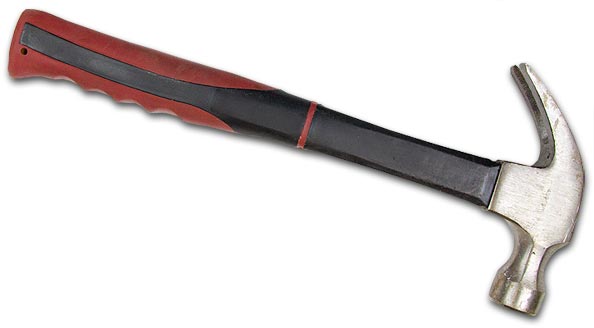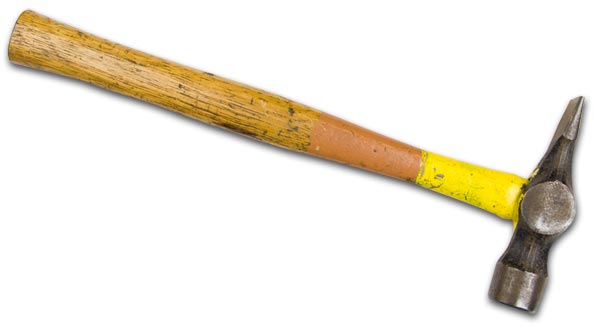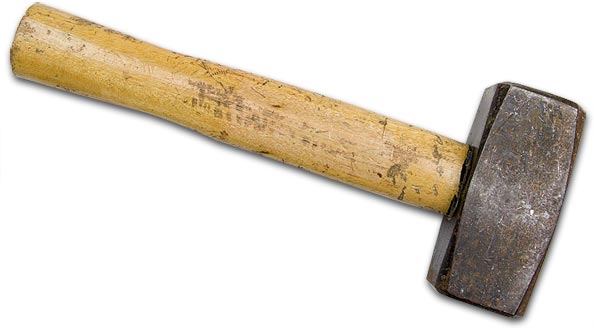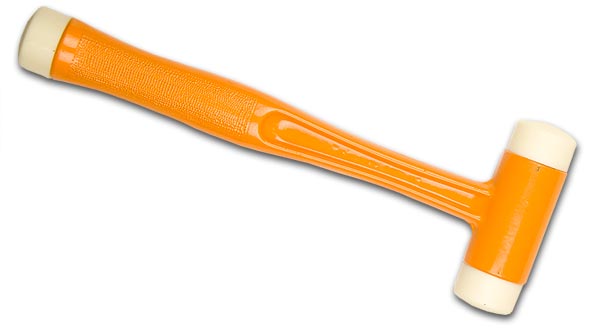Hand tools
Hammers
There is a wide variety of shapes and sizes of hammers available. They have handles of wood, steel or fibre glass, whereas the type of material used for the head classifies them into one of two groups:
- hard-head
- soft-head.
In the electrical trade at different times any of the following hammers would be useful.
Hard-head hammers
These hammers have heads of hardened steel.
Claw hammers
Available in a range of head weights from 0.5kg to 1.25kg. They are generally used for fixing items to timber, ie pin clips, etc. The claw can be used for removing nails from timber or for prising galvanised iron roofing, etc.

Claw hammer
Ball pein hammers
These have heads of high grade steel and can weigh between 100 grams and 1.4 kg. They have two striking ends which are:
- a face for general work, such as striking cold chisels, punches and masonry nails, etc
- a pein for special work such as riveting.

Ball pein hammer
Cross pein hammer
These also have heads of high grade steel and can weigh from 100 grams to 1.2 kg. The pein end of this hammer is like a blade and can be used to:
- stretch metal. You can straighten a bent bar by applying a light sharp blow to the concave side of the bend, or you can use the same principle to bend a bar
- work in confined spaces such as channels, corners and recesses where the striking face will not fit.

Cross pein hammer
Mash or club hammer
The mash hammer ranges in size from 1 to 2 kg. Normally used in conjunction with chisels as follows:
- bolster chisels – cutting bricks and concrete pavers, etc
- seaming, `coursing' or `plugging' chisels - removing bricks from walls, etc.

Mash hammer
Soft-head hammers
These hammers have heads made of soft materials such as brass, copper, aluminium, wood, rubber, plastic and rawhide. They are used to aid in dismantling and reassembling components or shaping sheet metal. Always use a hammer head that is softer than the material to be struck, eg use:
- copper to drive steel parts into position
- rawhide to seat insulated coils in an electric motor armature
- plastic to strike a finished metal surface.

Soft head hammer
Safe use of hammers
- Never use a claw hammer for hitting hard objects, ie masonry nails, cold chisels, etc, as the face is likely to chip.
- Never use a hammer with a split, badly chipped or loose head.
- Replace any handle that is cracked or split.
- Make sure the handle and striking faces are clean, dry and free from grease.
- Never hit two hammer faces together.
- Use a piece of soft metal between a hammer and hard steel.
- Make sure it is clear, behind and above, before you swing a hammer.
- Strike the heads of chisels and punches, etc, squarely.



